The League of Nations
In the Rise of Our Cinema
Anonymous
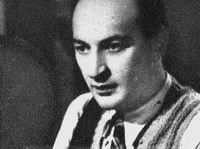
Feri Farkache
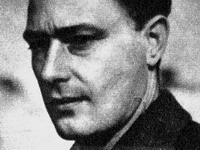
Fritz Kramp
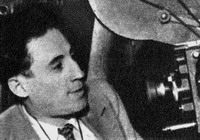
Sami Brill
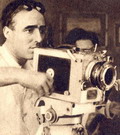
Primavera
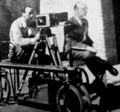
Feri Farkache behind the camera
All nations that got involved in the cinema industry resorted to foreign expertise and experience. Even America itself, which is the world leader in the cinema business, called upon European masters to further improve the industry.
All nations that got involved in the cinema industry resorted to foreign expertise and experience. Even America itself, which is the world leader in the cinema business, called upon European masters to further improve the industry.
And so at the beginning we went to them because we did not have cinema studios sufficiently equipped to record sound movies. But this was not enough, especially as filming sound movies was different from filming silent movies. Abdel Wahab therefore had to bring over cinema photographers especially from France to shoot his early films. These would return home once the shooting of the film was finished – until Abdel Wahab asked for them again.
Abdel Wahab went on doing that until we began to have cinema photographers he could trust, especially after the outbreak of World War II, when it became impossible to bring over European photographers to supervise his work in Egyptian films.
Some European photographers managed to settle down in Egypt, and have been filming our movies until now. Among them are the Hungarian photographer Feri Farkaš and the French photographer Sami Brill. Before them, there were two Italian photographers who had been filming our movies, Primavera and Tullio Chiarini, but when the war broke out between the Allies and the Axis, these two photographers went back to their home, Italy, and no news has been heard of them since. There was also another Italian photographer before them, who used to film our early films. This was Cornel, who grew old and died in Egypt. Di Luca is an Italian photographer who is still working in Egypt.
The Armenian community is the most active in the Egyptian cinema. At their head is Hirant Nassibian, who has a studio by the same name. It includes many specialized Armenians, working as sound and light engineers and set designers, as well as others who worked at developing and printing the films.
There were foreign directors as well. When Studio Misr was created, the director Fritz Kramp was brought over to himself direct the first production of the studio, which was Wedad, starring Omm Kalthoum. He believed that not all the films that the Egyptian companies produced had to be first class. There should be one or two great ones a year, and the rest should be ordinary but strong. He was also inclined towards introducing the comic element into Egyptian films, because the audience preferred comedy and entertainment to other themes. Kramp produced another film for Studio Misr, Lachine. The script was written by a German, and translated by Studio Misr men. Kramp returned to Germany when international signs warned of the outbreak of war.
Another director was the Italian Mario Volpi. Nahas Film employed him to direct its first film Song of the Heart (Onshoudat el Fouâd). Fanar Film, established by Bahiga Hafez, also employed him to direct its second film, The Accusation (El Ittihâm). Volpi did not stay long in Egypt before returning to Italy.
Later on, Studio Misr brought over from France Monsieur Andrea Venio to set the affairs of the Studio in order and organize a new artistic programme for it. He stayed in Egypt for a few years and the Studio benefited a great deal from his expertise. His programme included the same idea the German director Kramp had voiced earlier, which was to incorporate comedy into Egyptian films. Venio worked on that theme to include popular comic films in the Studio’s programme. The first of these was The Station of Entertainment (Mehatet el Ons) starring Ali Kassar and Aqila Rateb. The other film was Women are in Danger (El Sittat fi Khatar) starring the late Ehsane Gazayerly. When his contract ended he returned to France, leaving behind in Egypt a book he had published in French called Cinema, in which he wrote about the cinema as an art and an industry, and included some photographs and information on Egypt.
El Kawakeb. Issue 33. Special issue. 1951.

